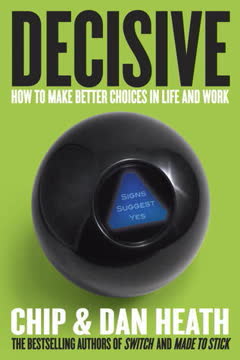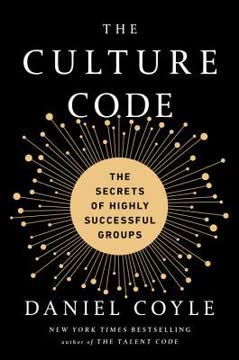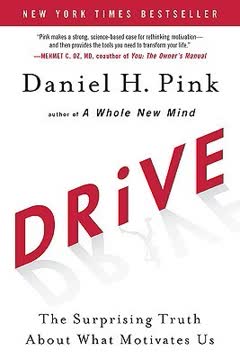重点摘要
1. 给予者、索取者和匹配者:理解互惠风格
“给予者、索取者和匹配者都能取得成功。但当给予者成功时,会产生独特的扩散和连锁反应。”
三种互惠风格。 人们在职业互动中通常分为三类:
- 给予者:关注他人需求,无私奉献
- 索取者:优先考虑自身利益,追求多得少给
- 匹配者:追求平衡交换,给予和索取成比例
对成功的影响。 虽然所有风格都能通向成功,但给予者有独特的广泛影响潜力:
- 索取者可能获得短期利益,但往往会破坏关系
- 匹配者保持平衡,但限制了网络的增长
- 给予者创造连锁效应,提升周围的人并建立持久关系
关于给予的误解。 许多人认为给予者最终会失败,但研究表明:
- 给予者在成功阶梯的底部和顶部都有过度代表
- 成功的给予者发展出避免被利用的策略,同时保持慷慨本性
2. 给予者的惊人成功:慷慨如何带来成就
“做一个给予者不适合短跑,但在马拉松中很有价值。”
长期视角。 给予者的成功往往随着时间展开:
- 初期的牺牲在短期内可能看似不利
- 通过建立信任、声誉和关系,利益逐渐积累
- 给予者创造扩展的支持和机会网络
心理优势。 给予培养了有助于成功的积极特质:
- 增强的同理心和换位思考能力
- 通过多样化合作提高解决问题的能力
- 在面对挑战时更具韧性和适应性
现实例子。 各领域成功的给予者展示了慷慨的力量:
- 亚伯拉罕·林肯通过持续的给予和合作在政治上崛起
- 亚当·里夫金通过“五分钟恩惠”建立网络
- 大卫·霍尼克作为风险投资家,通过优先考虑企业家的需求取得成功
3. 建立强大网络:给予者在连接中的优势
“通过给予超过所获,给予者建立了更深更广的网络,往往带来更多机会。”
网络扩展。 给予者自然会创建更大、更多样化的网络:
- 无期待地帮助吸引多样化的连接
- 慷慨的声誉带来更多介绍和机会
- 重新连接“休眠关系”提供新的资源
连接质量。 给予者的网络往往更强大、更支持:
- 基于信任的关系带来更有意义的交流
- 过去给予的互惠创造了善意储备
- 多样化的网络提供了多种技能和知识
网络建设策略:
- 练习“五分钟恩惠”——需要最少时间的小额给予行为
- 积极重新连接休眠关系,重振旧关系
- 专注于为他人增加价值,而不是立即个人收益
4. 合作与荣誉:给予者如何提升团队表现
“当给予者成功时,会产生扩散和连锁反应。当索取者获胜时,通常会有其他人失败。”
增强团队动态。 给予者创造积极的合作环境:
- 促进心理安全,鼓励开放沟通和创造力
- 通过自由分享知识和资源提升团队表现
- 激发团队成员之间的互惠给予
荣誉分配。 给予者对荣誉的处理影响团队成功:
- 愿意分享荣誉建立信任和动力
- 认可他人的贡献鼓励未来的合作
- 避免独占荣誉防止怨恨和竞争
案例研究:乔治·迈耶和《辛普森一家》。 喜剧作家乔治·迈耶的成功展示了给予者的优势:
- 持续贡献创意而不要求荣誉
- 创造了一个让他人感到舒适分享的环境
- 通过合作给予提升了节目的整体质量
5. 发现隐藏潜力:给予者的人才发展方法
“给予者不会等待潜力的迹象。因为他们倾向于信任和乐观地看待他人的意图,作为领导者、经理和导师,给予者倾向于看到每个人的潜力。”
识别潜力。 给予者擅长识别和培养人才:
- 关注动机和努力而不仅仅是天赋
- 提供成长和发展的机会
- 相信他人有改进的能力
人才发展策略:
- 创造心理安全,鼓励冒险和学习
- 提供具体、建设性的反馈以促进成长
- 提供具有挑战性的任务以拓展能力
现实影响。 给予者在人才发展方面的成功例子:
- C.J. 斯肯德教授会计学的方法,培养出顶尖人才
- 斯图·英曼在NBA的天才侦察,发现“潜力股”
- 导师们看到非传统候选人的潜力并帮助他们成功
6. 无力沟通的力量:通过谦逊影响他人
“索取者担心暴露弱点会损害他们的支配力和权威。给予者更愿意表达脆弱:他们关注帮助他人,而不是获得权力,因此不怕暴露自己的弱点。”
反直觉的影响。 无力沟通可能比支配更有效:
- 表达脆弱建立信任和融洽
- 提问和寻求建议吸引他人并表现出尊重
- 犹豫的语言允许合作解决问题
无力沟通策略:
- 使用犹豫、保留和免责声明来软化断言
- 练习多提问并积极倾听回应
- 分享个人弱点或错误以建立联系
跨领域应用:
- 销售:通过真诚关注客户需求建立信任
- 谈判:通过理解他人观点创造价值
- 领导:通过谦逊和开放激发追随
7. 避免倦怠:长期成功的可持续给予策略
“在缺乏自我保护本能的情况下,无私的给予很容易变得压倒性。”
平衡给予与自我照顾。 成功的给予者保持精力和动力:
- 认识到个人福祉的重要性
- 设定界限以防止被利用
- 进行“他人利益”给予,既有利于自己也有利于他人
可持续给予策略:
- 将给予分块到专门的时间段,而不是持续可用
- 专注于与个人价值和技能一致的高影响活动
- 寻求来自其他给予者网络的支持和互惠
影响的重要性。 看到给予的结果防止倦怠:
- 与受益者联系以了解贡献的影响
- 庆祝小胜利和向更大目标的进展
- 反思给予的连锁效应,超越直接受益者
8. 克服“门垫效应”:在慷慨与自我利益之间取得平衡
“给予者需要有他人利益:他们关心他人的利益,但也有雄心勃勃的目标来推进自己的利益。”
避免被利用。 成功的给予者保护自己免受索取者的侵害:
- 通过“真诚筛选”发展识别潜在索取者的技能
- 练习“慷慨的以牙还牙”——从给予开始,但回报他人的行为
- 学会对不符合个人或组织目标的请求说“不”
给予者的自信。 在慷慨与自我倡导之间取得平衡:
- 将自我推销重新定义为增加给予能力的一种方式
- 练习为他人倡导作为自我倡导的垫脚石
- 使用无力沟通技巧使请求更易接受
平衡的案例研究。 给予者保持界限的例子:
- 莉莲·鲍尔从被利用者到成功顾问的旅程
- 亚当·格兰特在教学和指导方法上的演变
- 各领域成功的给予者在保持诚信的同时取得成功
9. 创建给予文化:在组织中培养慷慨
“当人们认为他人不是给予者时,他们会以阻止他人给予的方式行事和说话,形成自我实现的预言。”
组织影响。 培养给予文化带来诸多好处:
- 增加合作和知识共享
- 提高员工参与度和工作满意度
- 改善问题解决和创新
培养给予的策略:
- 实施同事认可计划,突出给予行为
- 创建结构化给予的机会,如“互惠环”
- 在领导层级展示给予行为
克服障碍。 解决组织给予的常见障碍:
- 反驳给予稀少或天真的假设
- 提供明确的例子说明给予如何促进个人和集体成功
- 创建安全空间让员工寻求帮助和提供帮助
最后更新日期:
FAQ
What's Give and Take about?
- Core Concept of Reciprocity: Give and Take by Adam M. Grant explores three reciprocity styles—givers, takers, and matchers—and their impact on success in relationships.
- Success Through Giving: The book argues that givers, who contribute more than they receive, often achieve greater long-term success than takers.
- Real-World Applications: It applies these principles to various fields, encouraging a reevaluation of approaches to success and collaboration.
Why should I read Give and Take?
- Challenging Conventional Wisdom: The book challenges the belief that self-interest is the only path to success, offering a fresh perspective on generosity.
- Research-Backed Insights: Adam Grant presents compelling research and examples that illustrate the benefits of giving.
- Practical Strategies: It provides actionable advice on cultivating a giving mindset and building stronger relationships.
What are the key takeaways of Give and Take?
- Three Reciprocity Styles: Understanding givers, takers, and matchers can help navigate relationships more effectively.
- Givers Can Succeed: Givers can achieve high success levels by adopting strategies to avoid burnout and exploitation.
- Importance of Collaboration: The book emphasizes collaboration, showing how givers can foster teamwork and innovation.
How does Adam Grant define givers, takers, and matchers in Give and Take?
- Givers: Individuals who prefer to contribute more than they receive, focusing on others' needs without expecting returns.
- Takers: Those who prioritize their interests, often exploiting others to achieve their goals.
- Matchers: People who strive for a balance between giving and receiving, believing in reciprocity.
What strategies do givers use to avoid burnout, as discussed in Give and Take?
- Setting Boundaries: Successful givers set limits on their time and energy to prevent being overwhelmed.
- Prioritizing Self-Care: They ensure their well-being by finding time for rest and personal interests.
- Seeking Support: Building a network of fellow givers provides emotional and practical support.
How can givers build effective networks according to Give and Take?
- Focus on Relationships: Givers prioritize genuine relationships over transactional connections.
- Offer Help Generously: Helping others without expecting returns creates goodwill and trust.
- Leverage Weak Ties: Maintaining connections with acquaintances can provide new information and opportunities.
What role does collaboration play in the success of givers in Give and Take?
- Enhancing Creativity: Collaboration allows givers to combine strengths, leading to innovative ideas.
- Building Trust: Supporting one another fosters trust and camaraderie within teams.
- Creating a Positive Ripple Effect: Givers inspire others to adopt a giving mindset, benefiting everyone involved.
How does Give and Take address the concept of self-fulfilling prophecies?
- Belief in Potential: Leaders' beliefs about team members can influence their performance positively.
- Impact of Expectations: Higher expectations can lead to better performance, creating a cycle of success.
- Givers as Catalysts: Givers nurture potential in others, leading to self-fulfilling prophecies of success.
What is the significance of powerless communication in Give and Take?
- Building Connections: Powerless communication fosters trust and openness in conversations.
- Enhancing Influence: It makes messages more persuasive by inviting collaboration and input.
- Creating Psychological Safety: This communication style encourages idea-sharing without fear of judgment.
What is the "100-hour rule" mentioned in Give and Take?
- Optimal Volunteering Hours: Volunteering between 100 and 800 hours per year leads to the greatest happiness.
- Two Hours a Week: This breaks down to about two hours of volunteering each week for significant benefits.
- Balance is Key: The rule emphasizes balancing giving with personal well-being to avoid burnout.
How can I implement the principles of Give and Take in my workplace?
- Create a Reciprocity Ring: Encourage employees to make requests and help one another, fostering a culture of giving.
- Recognize and Reward Giving: Implement peer recognition programs to highlight and motivate acts of kindness.
- Encourage Job Crafting: Allow employees to modify roles to incorporate more giving, increasing satisfaction and productivity.
What are the best quotes from Give and Take and what do they mean?
- “Good guys finish first—and Adam Grant knows why.”: Challenges the stereotype that self-serving behavior is the only way to succeed.
- “The principle of give and take; that is diplomacy—give one and take ten.”: Suggests that generosity can lead to favorable outcomes in negotiations.
- “When we treat man as he is, we make him worse than he is; when we treat him as if he already were what he potentially could be, we make him what he should be.”: Emphasizes the power of belief in others' potential.
评论
《Give and Take》探讨了人们的给予方式如何影响成功。Grant将人们分为给予者、索取者和匹配者,并认为给予者往往在成功的两极。书中提供了有效的给予策略和避免倦怠的方法。虽然一些读者认为这本书内容丰富且研究充分,但也有人批评其缺乏交叉性和过度依赖轶事。许多人欣赏Grant的叙事方式和书中通过慷慨实现成功的乐观观点,尽管有些人觉得书中的分析可以更简洁和细致。
Similar Books

















